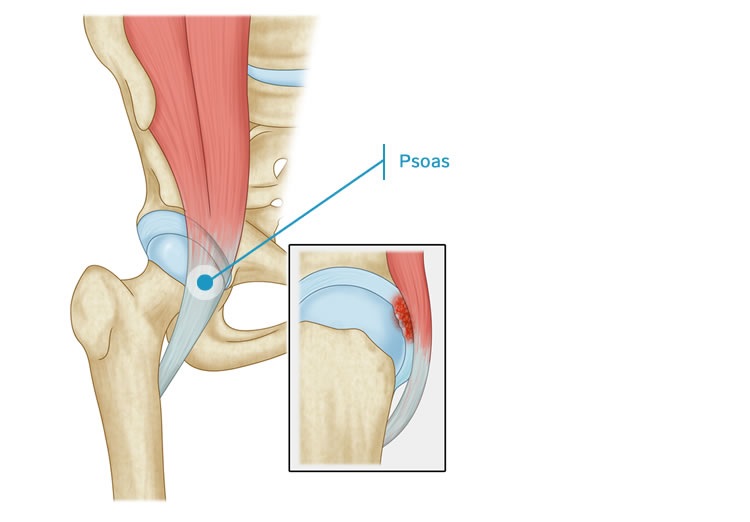Snapping Hip is a condition in which a “snap” is felt or heard at the hip level caused by sliding a muscle or tendon on a bony protrusion at the level of the hip joint. The cause can be due to a very pronounced bony protrusion or a very tight/shortened tendon, or both. Although it may not be painful at first, it can become symptomatic and end up causing degeneration of the affected tendon.
It is more frequent in women and athletes, especially in those sports that require repetitive hip flexion and rotation. It can also appear in activities of daily living such as when walking or getting up from a chair. The snapping hip can be external or internal; in other words, the problem can be inside the joint or on the tissue surrounding the joint. The “outside joint” problem arises from 2 muscles: the tensor fascia latae and the iliopsoas. They rub against bony prominences causing the symptoms. The “inside joint” problems are caused by: pieces of cartilage or bone, which are like pebbles inside of a cogwheel, labrum rupture or irregularities on the cartilage (this form is more serious and can degenerate into hip osteoarthritis).

